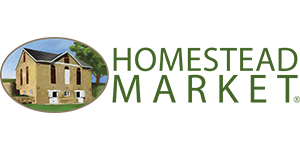What is Sap Sago or Schabziger or Swiss Green Cheese Anyway?
Sap Sago is a traditional and 100% natural Swiss cheese solely produced in the Canton of Glarus in Switzerland. It dates back to the 8th century, where records indicate that the monks of Glarus created the cheese. However, at the Glarner Landsgemeind, on April 24th, 1463 the Sap Sago recipe was legally protected. It was then agreed upon that the cheese must be marked with a stamp of origin in order to be called Schabziger. Thus, making Sap Sago one of the oldest and protected cheeses throughout the world!

Today it is produced only by Geska iin Switzerland, and we are one in a handful of stores carrying it. Don’t worry, Sap Sago can be shipped during any season and without cold packs because of its minimal moisture content. Sap Sago may be stored in a temperature range of 59 – 68 degrees F. However, some people prefer to refrigerate it, while others drop it in the freezer for longer term storage. If you do store it, keep the cheese sealed to prevent it from drying out, which allows it to be grated more easily.
How is the Sap Sago made?
It is created from skimmed cow’s milk and blue fenugreek, also called blue melilot, which is a type of clover that gives Sap Sago its pale lime color. Blue Fenugreek is a very expensive herb from the Middle East that was brought into Europe during ancient times. The milk and blue fenugreek are heated to 90 degrees F. Then an acid of lactic, citric or acetic, is added, causing the mixture to curdle. Next, the whey and curd are separated. The leftover whey is then curdled again at 194 degrees F and separated once more. This whey-condensate (called Ziger) is then molded into conical shapes during the last stages of production, and then dried for 2 to 6 months. The cheese can be wrapped in silver foil or cardboard containers. However, if you wondering what the difference is between Sap Sago and Schabziger Stöckli it is the reduced water content – Sap Sago with 40% and Schabziger Stöckli with 50%.
What can you expect in a bite of Sap Sago?
Well, you can count on it being an aged dry, hard cheese with a pungent, spicy but delicious flavor. If it is too strong by itself, try cutting the cheese with butter to make it a cheese spread called Zigerbutter. It is recommended for the faint of heart not to eat Sap Sago by itself, but rather use it as a condiment or in a dipping sauce. Our favorites are grating the cheese over a salad or noodles, mixing it with butter to spread over crackers or toasted bread, and mixing it into fondue. For health nuts, it is high in protein and very low in fat - less than 3% - which is why it tends to be dry and hard.
If you are looking for an easy way to grate your Sap Sago cheese, we would recommend the Zyliss Classic Rotary Cheese Grater. The Sap Sago fits in the grater especially well, making it quick to add to your favorite dishes. Last year, we sold 2,128 cones! We encourage everyone to try this flavorful cheese - it may become your new favorite menu addition.
References:
https://cheese.com/sap-sago/
https://en.wikipedia.org/wiki/schabziger
http://www.homesteadmarket.com/sap-sago-cheese--3-...
http://www.homesteadmarket.com/Zyliss-Classic-Rota...
The Geska Company
Recent Posts
-
Creamy Buttered Noodles with Grated Sap Sago Cheese – A Simple Yet Gourmet Delight
Sometimes, the simplest dishes bring the most comfort. Buttered noodles are a timeless classic, but
-
Delightful Stuffed Dates with Sap Sago & Cream Cheese (Plus Air Fryer Option!)
If you’re looking for a unique and delicious appetizer or snack, these stuffed dates with Sap
